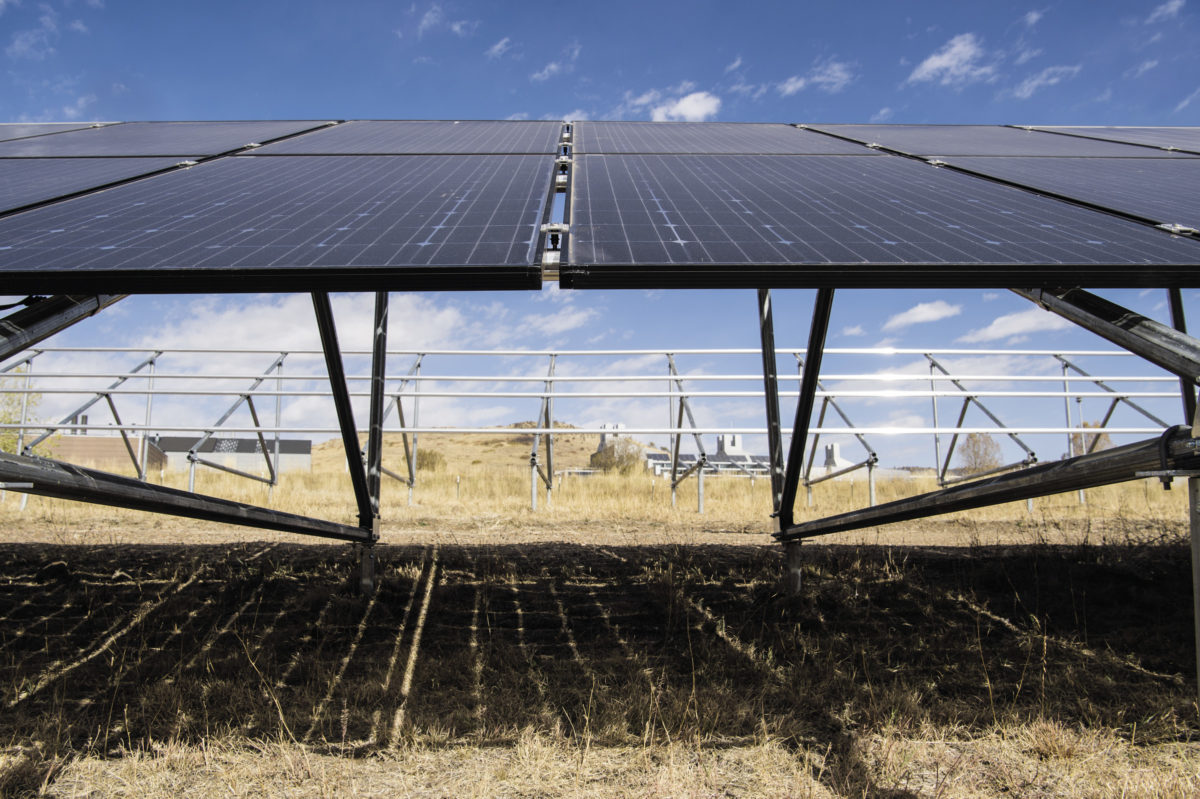Solar cell performance is a function of various factors, including, latitude, irradiance spectrum, and temperature. Because of their performance under specific conditions, some cell technologies are better suited to certain regions or climate conditions than others.
For example, according to the authors of a new paper in iScience, CdTe thin-film modules cope better with high temperatures in arid regions than their silicon-based equivalents. Meanwhile, high band-gap modules like CdTe and hetero-junctions don't offer the same level of energy yield improvement when used in combination with a tracker.
This is the key finding of the research paper Location-specific spectral and thermal effects in tracking and fixed-tilt photovoltaics systems authored by Ripalda et al. and published in iScience. The team collected satellite data from the National Solar Radiation Database, which was recently made available in such high resolution that new modeling approaches were made possible.
The team sourced geographical and temporal variations of spectral irradiance and meteorological parameters like wind speed and ambient temperature. Spectral irradiance changes with the sun's position, water vapor in the atmosphere, and module tilt angle.
With this meteorological dataset, the group modeled PV efficiency and energy yield as a function of location in the United States. The modeling was done for single-junction silicon cells, various heterojunction configurations, CdTe thin-film, perovskites, and fixed-tilt and single-axis trackers mounting structures.
Silicon modules mounted on fixed-tilt structures were first subject to the modeling. A notable early observation was that the highest energy efficiency and energy yield do not occur in the same locations. The modeled efficiency of modules was better in northeastern parts of the U.S., while yield was better in the region close to the Mexican border. This is due to higher cell temperatures where irradiation is high, which leads to higher recombination currents and lower voltages.
Close to the Canadian border, the researchers modeled an energy yield of 1400 kWh per installed kW, while closer to the Mexican border, that figure was above 2000 kWh per installed kW.
Additionally, the researchers mapped the spectral correction to the energy yield. Here, the northeasternmost states showed a 1% correction rate. States in the south, such as Florida, the Carolinas, and Louisiana, have virtually no correction rate. In the southwest around Colorado, New Mexico, Utah, and Arizona, the correction rate was most pronounced, with -1% and more than -1.5%. Interestingly, the effect appears rather contained in that area, with California or Texas showing much less spectral correction than their neighbors.
The team stresses that neglecting spectral effects leads to overestimating energy yield in some regions while underestimating it in others. Spectral variability effects in single junctions are due to the absorption threshold of the semiconductor. These show a clear correlation between topographic altitude and efficiency losses.
Efficiency was also higher in low altitudes due to infrared losses caused chiefly by the atmosphere's water content. “Because these losses occur at energies below the bandgap, they have the effect of an apparent efficiency increase that is not necessarily accompanied by an energy yield increase,” the researchers explain.
The team also considered that Cadmium Telluride has a higher band-gap of 1.45 eV, compared to 1.12 eV for crystalline silicon technologies. This, the scholars speculated, would make CdTe technologies more advantageous in areas with lower infrared irradiance and higher temperatures. The infrared losses are caused by atmospheric water, which decreases the plane of the array irradiance. This affects energy yield as the changes occur at energies below the CdTe band-gap. Consequently, the efficiency of CdTe and perovskite single junctions increases with increasing water in the atmosphere.
Furthermore, single-axis tracking also increases the direct fraction of irradiance on the module — and that lowers average photon energy, according to the authors. “…the effect that prevails is a reduction in carrier thermalization losses, as the bandgap of silicon (1.12 eV) is smaller than the optimal band gap for maximum yearly energy production (1.35 eV),” they stipulate. “Conversly if perovskites or other high band-gap single junctions are used, spectral effects favor a fixed tilt geometry.” But because the plane of the array irradiance is higher for tracking system than it is for fixed tilts, the energy yield will always be higher for trackers. But the benefit won't be as significant for high band-gap cell technologies.
The modeled yield improvement for combining silicon PV and trackers is highest in the south of the U.S. with yield improvements of more than 22%, while the northernmost regions achieve yield improvements of just under 12%.
Multi-junction cells have a higher sensitivity to spectral variations. In their modeling, the researchers found that multi-junction technologies are most preferable in areas that largely overlap with the regions favored for tracking. “This reinforces a synergy between these two technologies given by the fact that the revenue generated by a PV system results from the product of a number of factors such as solar cell efficiency, inverter efficiency, cell interconnection efficiency, POA irradiance and transmission of anti-reflective coating and encapsulating materials.”
That means multijunction cells achieve a 22% energy yield advantage in the arid regions of the country's southwest, though even in the northern parts, yield improvements of 21% have been modeled.
“We find that spectral effects favor trackers if silicon modules are used, but favor a fixed tilt instead if perovskites or CdTe are used,» the authors conclude.”
The team exemplified the extreme spectral sensitivity of heterojunctions on a six-junction configuration. The energy yield advantage over silicon single junctions ranges from 50.8% in the Rocky Mountains to 38.75 in New England.
In conclusion, the researchers found that due to the wide-ranging atmospheric conditions and latitudes in the U.S., module efficiency can vary by location up to 1.4% (absolute efficiency). About half of this variability is caused by spectral sensitivity effects, with spectral correction factors ranging from -2% to 1.1% in terms of energy yield, or -0.5% to 0.3% of absolute efficiency.
This content is protected by copyright and may not be reused. If you want to cooperate with us and would like to reuse some of our content, please contact: editors@pv-magazine.com.




By submitting this form you agree to pv magazine using your data for the purposes of publishing your comment.
Your personal data will only be disclosed or otherwise transmitted to third parties for the purposes of spam filtering or if this is necessary for technical maintenance of the website. Any other transfer to third parties will not take place unless this is justified on the basis of applicable data protection regulations or if pv magazine is legally obliged to do so.
You may revoke this consent at any time with effect for the future, in which case your personal data will be deleted immediately. Otherwise, your data will be deleted if pv magazine has processed your request or the purpose of data storage is fulfilled.
Further information on data privacy can be found in our Data Protection Policy.